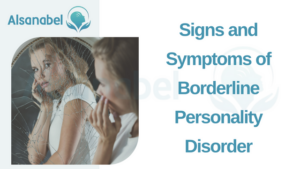Understanding Borderline Personality Disorder 2023
- Category ADHD
What is Borderline Personality Disorder (BPD)?
Borderline Personality Disorder (BPD) is a mental health condition that affects an individual’s thoughts, emotions, and behavior. It is characterized by instability in relationships, self-image, and emotions, as well as impulsive and self-destructive behaviors. Understanding BPD is crucial in order to support individuals who are diagnosed with this disorder and to provide them with the necessary help and resources.
BPD affects approximately 1-2% of the general population, predominantly women. It usually emerges in early adulthood and can cause significant distress and impairment in various areas of life, including work, relationships, and overall well-being.
Causes and Risk Factors of Borderline Personality Disorder
The exact cause of BPD is unknown, but there are various factors that contribute to its development. These include:
- Genetic and Biological Factors: Research suggests that certain genetic and biological factors may play a role in the development of BPD. Family history of BPD or other mental health conditions, as well as abnormalities in brain structure or function, have been associated with an increased risk.
- Environmental Factors: Traumatic experiences, such as abuse, neglect, or unstable family dynamics, significantly increase the risk of developing BPD. The presence of these environmental factors, especially during childhood or adolescence, can impact the development of emotional regulation skills and contribute to the onset of the disorder.
- Personality Traits: Certain personality traits, such as impulsivity and sensitivity to emotions, may contribute to the development of BPD. Individuals who have a difficult time managing intense emotions and who exhibit impulsive behaviors are more prone to developing the disorder.
It is important to note that BPD is a treatable condition, and individuals diagnosed with the disorder can lead fulfilling lives with the appropriate support, therapy, and interventions. With increased awareness and understanding of BPD, we can work towards creating a more inclusive and supportive society for those affected by this condition.
Signs and Symptoms of Borderline Personality Disorder
Borderline Personality Disorder (BPD) is a complex mental health condition that manifests in various signs and symptoms. Understanding these indications is crucial for identifying and supporting individuals diagnosed with this disorder.

Emotional Instability and Intense Mood Swings
One of the hallmark traits of BPD is emotional instability. Individuals with BPD often experience intense and rapidly changing emotions that can be challenging to manage. They may feel overwhelming sadness, anger, or anxiety, which can lead to sudden mood swings. These emotional fluctuations can occur in response to everyday situations, and individuals with BPD may struggle to regulate their emotions effectively.
Impulsive and Self-Destructive Behaviors
People with BPD may engage in impulsive behaviors as a way to cope with their emotional turmoil. These behaviors can include reckless driving, substance abuse, excessive spending, binge eating, or self-harm. These actions are often attempts to alleviate emotional pain or distract from overwhelming feelings. However, they can have severe consequences for the individual’s well-being and relationships.
Individuals with BPD may also exhibit self-destructive behaviors, such as suicidal tendencies or self-harming. These actions stem from intense emotional distress and should be taken seriously. It is crucial to provide support and encourage them to seek professional help if you suspect someone may be engaging in self-destructive behaviors.
By recognizing these signs and symptoms, you can better understand the challenges faced by individuals with BPD and offer them the appropriate support and resources. It is important to approach them with empathy, compassion, and a willingness to listen without judgment. With early intervention and proper treatment, individuals with BPD can learn to manage their emotions, improve their relationships, and lead fulfilling lives.
Understanding Obsessive-Compulsive Disorder 2023
Diagnosis and Treatment of BPD
Borderline Personality Disorder (BPD) is a complex mental health condition that can have a significant impact on individuals’ lives. Understanding the diagnostic criteria and available treatment options is crucial for supporting those diagnosed with BPD.
Diagnostic criteria for Borderline Personality Disorder
The Diagnostic and Statistical Manual of Mental Disorders (DSM-5) provides specific criteria for diagnosing BPD. These criteria include:
- Impaired self-image: Individuals with BPD often struggle with distorted and unstable self-image, leading to feelings of emptiness and identity disturbance.
- Intense and unstable relationships: BPD is characterized by unstable and intense interpersonal relationships. Individuals may exhibit a fear of abandonment and engage in behaviors to avoid it.
- Emotional dysregulation: Emotional instability and difficulty regulating emotions are key features of BPD. Individuals may experience intense mood swings, anger outbursts, and difficulties managing emotional reactions.
- Impulsive behaviors: BPD is associated with impulsive behaviors such as substance abuse, self-harm, reckless spending, or risky sexual behaviors.
- Chronic feelings of emptiness: Individuals with BPD often experience a pervasive sense of emptiness, leading to a constant search for external validation and stimulation.
Different therapeutic approaches for treating BPD
Various therapeutic approaches can be effective in treating BPD. These include:
- Dialectical Behavior Therapy (DBT): DBT is a specialized form of therapy that focuses on teaching individuals new skills to regulate emotions, improve interpersonal relationships, and decrease self-destructive behaviors.
- Psychodynamic Therapy: This therapy aims to uncover and address the underlying causes of BPD by exploring thoughts, emotions, and childhood experiences.
- Cognitive-Behavioral Therapy (CBT): CBT helps individuals identify and modify maladaptive thought patterns and behaviors associated with BPD.
- Medication: Certain medications, such as mood stabilizers, antidepressants, or antipsychotics, may be prescribed to manage specific symptoms of BPD, such as depression or impulsivity.
- Group Therapy: Participating in group therapy sessions can provide individuals with BPD the opportunity to connect with others facing similar challenges, share experiences, and learn from one another.
It is important to note that treatment for BPD is highly individualized, and a combination of therapies may be necessary. The support of a skilled mental health professional is crucial in developing a tailored treatment plan that addresses the unique needs of each individual.
Coping Strategies for Individuals with BPDisorder
Individuals with Borderline Personality Disorder (BPD) often face significant challenges in managing their emotions and maintaining healthy relationships. However, with the right coping strategies, they can improve their emotional well-being and overall quality of life. Here, we will explore some effective techniques for emotional regulation and building healthy relationships.

Emotional Regulation Techniques
Effective emotional regulation is crucial for individuals with BPD to manage intense mood swings and avoid impulsive behaviors. Here are some techniques that can be helpful:
- Mindfulness: Practicing mindfulness can help individuals become more aware of their emotions without judgment. This allows them to observe their feelings and thoughts without reacting impulsively.
- Distract and Delay: When experiencing intense emotions, individuals can distract themselves by engaging in activities that they find enjoyable or calming. Delaying actions or decisions until they have had time to calm down can prevent impulsive behaviors.
- Self-Soothing: Using self-soothing techniques like deep breathing exercises, progressive muscle relaxation, or engaging in comforting activities can help individuals calm their emotions and regain control.
Building and Maintaining Healthy Relationships
Establishing and sustaining healthy relationships can be challenging for individuals with BPD due to their fear of abandonment and difficulty in managing emotions. However, with the following strategies, they can improve their relational skills:
- Communication: Learning effective communication techniques, such as active listening and expressing emotions in a non-confrontational manner, can help individuals express themselves and understand others better.
- Boundaries: Establishing and respecting personal boundaries is essential in maintaining healthy relationships. Individuals with BPD should communicate their needs and expectations clearly while also being mindful of others’ boundaries.
- Seeking Support: Participating in group therapy or support groups specific to BPD can provide individuals with a supportive environment to discuss their challenges and learn from others facing similar experiences.
- Relationship Maintenance: Regularly checking in with loved ones, being open to feedback, and putting effort into maintaining relationships can help individuals with BPD build trust and stability.
It is important to note that coping strategies for BPD may vary for each individual. Working with a skilled mental health professional can provide personalized guidance and support in developing an effective coping plan tailored to specific needs.
Supporting Someone with BPD
Understanding and educating others about BPD
Supporting someone with Borderline Personality Disorder (BPD) requires a foundational understanding of the condition. BPD is characterized by intense emotional instability, impulsive behavior, and difficulties in forming and maintaining relationships. Educating yourself and others about BPD can help foster empathy, reduce stigma, and create a supportive environment for individuals with this condition.
It is important to remember that BPD is not a choice or a character flaw. It is a complex mental health condition that can significantly impact an individual’s life. By learning about the symptoms, potential triggers, and common challenges faced by those with BPD, you can better understand their experiences and validate their emotions. Resources such as books, online articles, and support groups specifically focused on BPD can provide valuable insights.
Providing support and resources for loved ones
Supporting someone with BPD involves offering unconditional love, patience, and understanding. Here are some ways you can provide support:
- Listen and validate: Be a compassionate listener and validate their emotions without judgment. Show that you understand their struggles, even if you may not fully comprehend them.
- Encourage therapy: BPD often requires professional help. Encourage your loved one to seek therapy from a trained mental health professional experienced in working with BPD. Therapy can provide essential tools and coping mechanisms for managing distressing symptoms.
- Learn about treatment options: Familiarize yourself with the different treatment approaches for BPD, such as dialectical behavior therapy (DBT), cognitive-behavioral therapy (CBT), and medication. Understanding these options can help you support your loved one in their treatment journey.
- Be patient and consistent: BPD symptoms can be challenging to manage, and progress may take time. Be patient and remain consistent in your support. Consistency and stability can help individuals with BPD feel safe and secure.
- Take care of yourself: Supporting someone with BPD can be emotionally draining. It is crucial to prioritize your own mental and physical well-being. Engage in self-care activities, seek support from trusted friends or professionals, and set boundaries to maintain a healthy balance.
By understanding and educating others about BPD and providing ongoing support, you can play a vital role in helping your loved one navigate their journey towards recovery and emotional well-being. Remember, with the right support system, individuals with BPD can lead fulfilling and meaningful lives.
Importance of Professional Help and Further Resources
Seeking professional help is vital in managing BPD symptoms and promoting recovery. Encouraging your loved one to engage in therapy with a mental health professional experienced in working with BPD can provide essential tools and coping mechanisms. Treatment approaches such as Dialectical Behavior Therapy (DBT), Cognitive-Behavioral Therapy (CBT), and medication can also be beneficial.

Additionally, there are resources available, including books, online articles, and support groups specifically focused on BPD. These resources can provide valuable insights and support for both individuals with BPD and their loved ones.
Advice for Self-Care and Managing BPD Symptoms
Supporting someone with BPD also requires taking care of oneself. It is crucial to prioritize your own mental and physical well-being. Engaging in self-care activities, seeking support from trusted friends or professionals, and setting boundaries are essential in maintaining a healthy balance.
Furthermore, being patient and consistent in your support is important, as BPD symptoms can be challenging to manage, and progress may take time. By providing unconditional love, patience, and understanding, you can create a safe and secure environment for individuals with BPD to thrive.
In conclusion, understanding BPD, seeking professional help, and practicing self-care are all essential aspects in supporting someone with this condition. By continuing to educate oneself, fostering empathy, and providing ongoing support, we can make a significant difference in the lives of individuals with BPD and help them on their journey towards recovery and emotional well-being.









